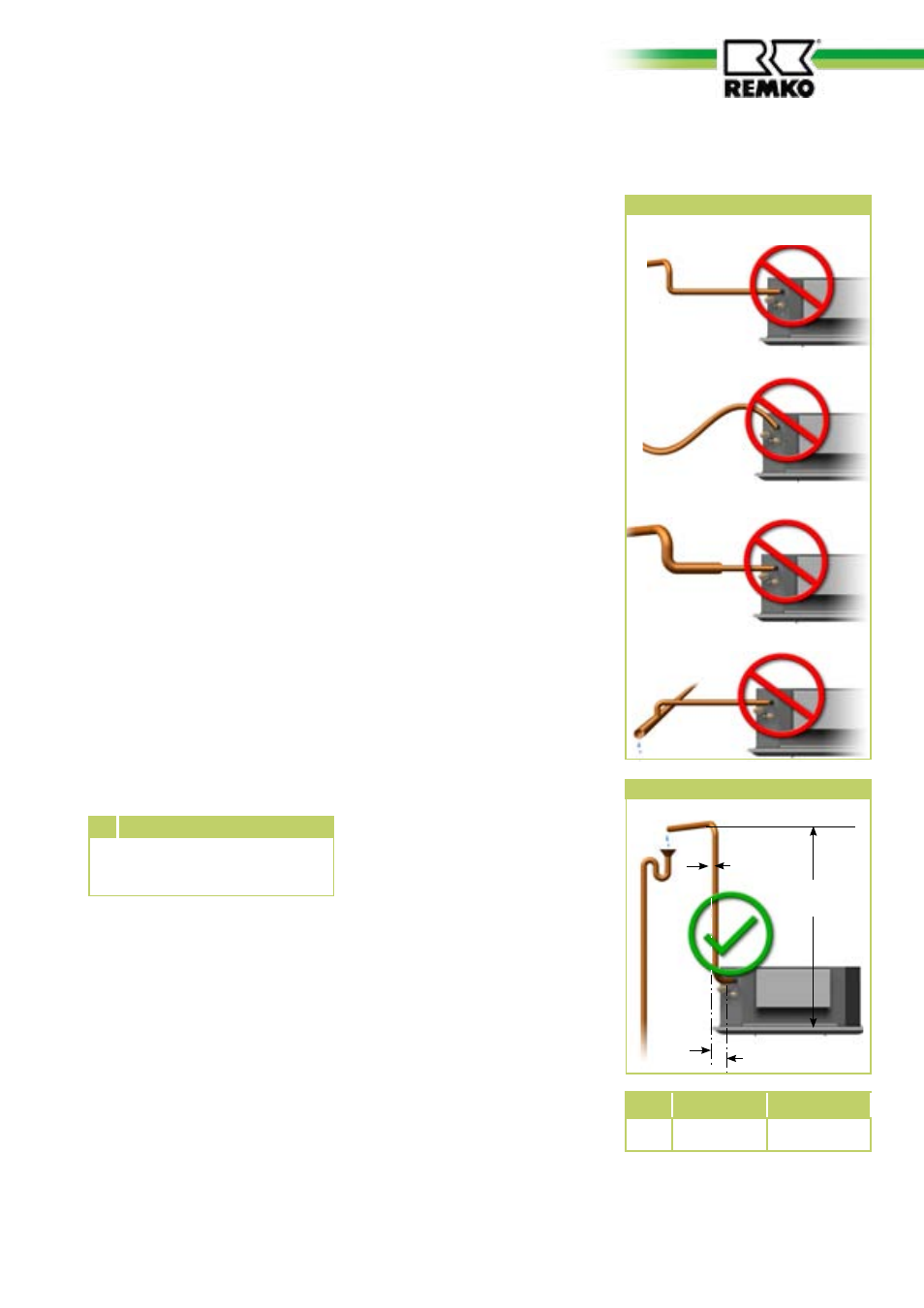Condensate drain, Tightness check – REMKO RVD 351 DC User Manual
Page 21

Condensate drain
If the temperature falls below the
dew point, condensation will form
on the cooling fins during cooling
mode.
A collection tray together with
a condensation pump and float
switch are fitted as standard below
the cooling fins. Should the float
switch trip a protective shutdown
due to inadequate removal of
the condensation, the pump will
switch on immediately and run on
for approx. three minutes.
Tightness check
Once all the connections have
been established, the pressure
gauge station is attached as fol-
lows to the Schrader valve (if
fitted):
red = small valve
= injection pressure
blue = large valve
= suction pressure
Once connected, perform a tight-
ness test using dried nitrogen.
The tightness test involves spray-
ing a leak detection spray onto
the connections. If bubbles are
visible, the connections have not
been properly made. Re-tighten
the connection or prepare a new
flange.
If the tightness test is success-
fully completed, depressurise
the refrigerant pipes and start a
vacuum pump with an absolute
final partial pressure of min. 10
mbar to remove the air in the pipe.
Any humidity present in the pipes
is also removed.
A vacuum of min. 20 mbar
must be created!
CAUTION
The time required to generate the
vacuum is dependent on the pipe-
work volume of the indoor unit
and the length of the refrigerant
pipes. This always takes at least
60 minutes
.
Once any foreign gases and
humidity have been completely
extracted from the system, the
valves on the pressure gauge sta-
tion are closed and the valves on
the outdoor unit are opened as
described in the chapter on "Com-
missioning".
■
The condensation pipe should
have a fall of min. 2 %. This is
the responsibility of the cus-
tomer. If necessary, fit vapour
diffusion proof insulation.
■
If the level of the condensation
pipe on the unit is above that
of the outlet, route the pipe
vertically upwards (max. 1000
mm from the lower edge of the
unit) and then with a fall to the
drain.
■
The condensation line from the
unit should run freely into the
drainage pipe. If the condensa-
tion runs directly into a sewer
pipe, fit a trap to prevent any
unpleasant odours.
■
When operating the unit at
outdoor temperatures below 4,
ensure the condensation pipe is
laid to protect it against frost.
If necessary, fit supplementary
pipe heating.
■
Once the pipe has been laid,
check the condensation drains
off and permanently seal it.
Riser pipe too far away
Condensation pipe too large/small
No fall
Cannot freely drain away
12-20 mm
min. 2% fall
Condensation connection - Correct!
A
max. 100 mm
Condensation connection - Wrong!
RVD 351 IT
RVD 521 IT
A
500 mm
750 mm
21
